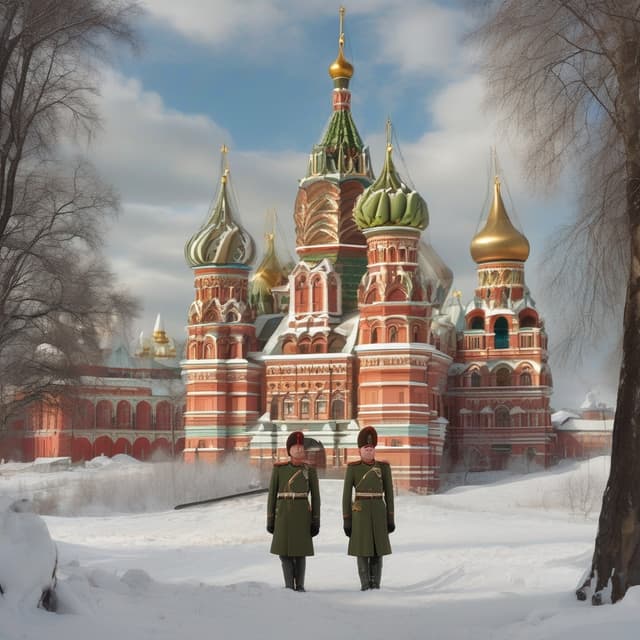
| Name | New Tsardom of Russia |
| Emergence | Survived crises that toppled original empire, underwent industrialization and military buildup in mid-20th century |
| Challenges | Political intrigue, dynastic power struggles, occasional nationalist unrest |
| Predecessor | |
| Global influence | Emerged as dominant global force, seeks to extend influence around the world |
| Political system | Authoritarian, militaristic great power |
The New Tsardom of Russia, also known as the Tsardom of Russia or simply Russia, is an authoritarian state that traces its lineage back to the Tsardom of Muscovy and the Romanov dynasty that ruled the Russian Empire for over 300 years. After narrowly surviving a series of crises in the early 20th century that toppled the old empire, the Tsardom reinvented itself into an industrialized military superpower that now rivals the Western Democracies on the global stage.
The Romanov dynasty, which had ruled Russia since 1613, faced a series of existential threats in the late 19th and early 20th centuries. The 1905 Russian Revolution, World War I, and the February Revolution of 1917 each came close to toppling the monarchy. However, through a combination of brutal crackdowns, concessions to nationalist movements, and the military's continued loyalty, the Romanovs managed to cling to power.
By 1920, the monarchy had weathered the storm, but Russia was in a state of political, economic and social turmoil. The old imperial system was deeply discredited, nationalist movements were on the rise, and the country lagged far behind its Western rivals in industrialization. The Romanovs knew they had to radically transform Russia to ensure their survival.
Over the following decades, the Tsardom undertook a massive program of state-directed industrialization, rapidly building up its manufacturing base, extractive industries, and infrastructure. This was accompanied by the ruthless suppression of dissent, the consolidation of autocratic power, and the expansion of the secret police.
By the middle of the 20th century, the Tsardom had emerged as a major industrial and military power. It had developed an advanced arms industry, a large conscript army, and a growing nuclear weapons program. The government directed resources towards grandiose projects like the construction of new Siberian cities, the expansion of the Trans-Siberian Railway, and the development of heavy industries.
This transformation was driven by a new generation of Romanov rulers who were obsessed with restoring Russia's global might and countering the Western democracies, which they saw as existential rivals. Figures like Tsar Konstantin II and Tsaritsa Alexandra II presided over this period of rapid modernization and militarization.
As the Tsardom grew stronger, it began to aggressively assert its interests abroad. It intervened in conflicts around the world, often backing anti-democratic, nationalist movements against Western-aligned governments. In the Balkans, the Tsardom backed Serbia against Austria-Hungary; in the Middle East, it supported various Arab nationalist groups against Britain and France; and in East Asia, it challenged the United States and Japan for influence.
This assertive foreign policy repeatedly brought Russia into conflict with the Western democracies, leading to a series of crises, proxy wars, and occasional direct military clashes. The current global order is marked by an uneasy Cold War-like standoff between the Tsardom and the Western alliance, with both sides building up their military might and vying for geopolitical advantage around the world.
Within Russia itself, the Tsardom remains a highly centralized, authoritarian state dominated by the Romanov dynasty and the Okhrana. Occasional nationalist and democratic uprisings are brutally crushed, and dissent is tightly controlled through a combination of censorship, propaganda, and state violence.
However, the Tsardom is also beset by its own internal power struggles, as different factions of the Romanov clan vie for influence and jockey for the throne. Coups, assassinations, and dynastic intrigue are common, creating an atmosphere of constant instability and uncertainty at the top of the Russian government.
This volatile mix of authoritarian rule, military aggression, and internal turmoil has made the Tsardom of Russia a major source of global tension and conflict in the modern era. Its outsized role in world affairs and its willingness to challenge the Western liberal order ensure that it will remain a central player shaping the course of the 21st century.